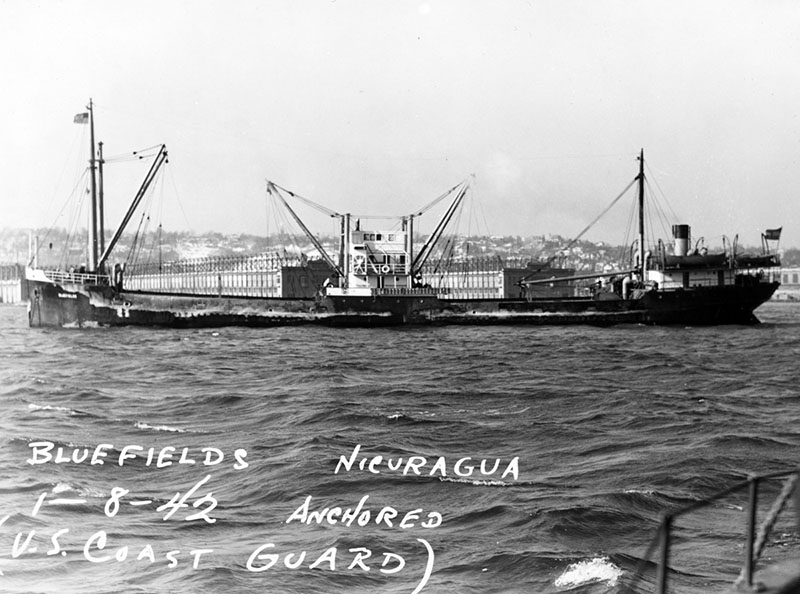July 15, 1942. Off Cape Hatteras, N.C., the German U-boat U-576 sank the Nicaraguan-flagged freighter Bluefields. The crew of the Bluefields was able to escape without casualty, but U-576 felt the full wrath of the remaining merchant ship convoy and its U.S. military escorts. As the Navy air cover bombed the sub from above, the merchant ship Unicoi attacked with its deck gun. U-576 sank within minutes.
That convoy skirmish was just one encounter in the “Battle of the Atlantic,” the longest continuous military campaign in WWII pitting German and Italian naval vessels against Canadian, British and U.S. forces defending Allied merchant ships ferrying supplies and equipment.
As the war waged on, the Bluefields and U-576 were lost to history. In 2014, the National Oceanic and Atmospheric Administration discovered the vessels 35 miles offshore and approximately 700 feet underwater — just 240 yards apart.

A sonar image shows the final resting place of U-576. NOAA/SRI photo.
Now, a new mission to the vessels will attempt to visualize and virtually recreate the underwater battlefield using information collected by manned submersibles.
“This discovery is the only known location in U.S. waters that contains archaeologically preserved remains of a convoy battle where both sides are so close together,” said Joe Hoyt, Monitor National Marine Sanctuary archaeologist and chief scientist for the expedition. “By studying this site for the first time, we hope to learn more about the battle, as well as the natural habitats surrounding the shipwrecks.”
Underwater robots and advanced remote sensing technology, provided by 2G Robotics and SRI International, will generate bathymetric data and detailed acoustical models of the wrecks and surrounding seafloor. University of North Carolina's Coastal Studies Institute will provide three-dimensional modeling of the wrecks. Project Baseline, a global conservation non-profit, is supplying the GlobalSubDive assets including the research vessel Baseline Explorer, and two manned submersibles.

U-576 at sea. Photo courtesy Ed Caram Collection.
The expedition runs through Sept. 6 and builds on previous work by NOAA and its partners to document nationally significant shipwrecks in the “Graveyard of the Atlantic” off North Carolina’s Outer Banks. During the expedition, NOAA will also visit several other WWI, WWII and Civil War vessels including the famed Civil War ironclad, USS Monitor.
The Bluefields and U-576 were placed on the National Register of Historic Place last year, and NOAA is considering expanding the National Marine Sanctuary around the Monitor to increase protections for these two wrecks, and others.
“The significance of these sites cannot be overstated,” said David Alberg, superintendent of Monitor National Marine Sanctuary. “This area off North Carolina is the best representation of a WW II battlefield off the East coast. Now, working with our partners, we have an opportunity to study it, characterize it, and, like other historic battlefields in this country, hopefully protect it.”




